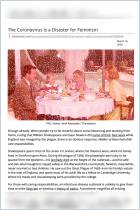Join getAbstract to access the summary!

Join getAbstract to access the summary!
Stephanie H. Murray
The Remote Work-Fertility Connection
The Atlantic, 2021
What's inside?
Remote work options have demographic consequences.
Recommendation
The remote-work arrangements many companies adopted during the COVID-19 pandemic benefited one demographic group in particular: highly-educated working women with children, who were able to do their jobs from home. In this article, Stephanie H. Murray sheds light on a new type of “digital divide” researchers are starting to observe in the industrial world, between those with virtual work options and those without. The consequences of this gap, Murray writes, may, ultimately, be more far-reaching than you would expect – directly affecting a woman’s choice to have children.
Summary
About the Author
Stephanie H. Murray is a public policy researcher turned freelance writer.

















Comment on this summary